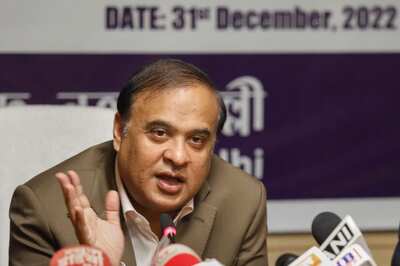
views
The Narendra Modi government’s first Budget in its second term, to be presented by Finance Minister Nirmala Sitharaman on July 5, is eagerly awaited. For this will unveil the economic path the regime wants to take — whether to go for bold reforms (which the economy badly needs) or stick with the status quo and persist with incrementalism. The path taken will affect everybody, from big business and the MSME sector to the farm sector, especially the last.
That agriculture is gasping for breath is a truism; the sector employs about half the workforce but contributes to the economy just 17-18 per cent of the Gross Domestic Product. Drastic situations demand drastic measures. Would Sitharaman go for them?
On the face of it, the government seems extremely keen to improve the situation. It has pledged to double the incomes of farmers by 2022. It is reportedly working on an assortment of schemes and programmes including a mobile app for direct marketing by farmers, a fund for pisciculture, and the use of big data, artificial intelligence (AI) and block chain technology.
The government wants to ensure that rural India gets investment, public as well as private, to the tune of Rs 25 lakh crore in five years. It also wants to bring one crore hectares of land under micro-irrigation.
So far, so good. Schemes, programmes, special funds, technology, innovation, new methods — all of them will surely help. But the critical issue remains the same: the farm sector ought to be liberalised for once and all. Concomitantly, populist measures like farm loan waivers have to be done away with.
In its report on state finances in July last year, the Reserve Bank of India had warned against waivers. Niti Aayog Vice-Chairman Rajiv Kumar echoed similar views a few months later: “Farm loan waiver is not a solution to farm sector distress. It is not a solution but is [a] palliative.”
The Niti Aayog, which is headed by the Prime Minister, last year released ‘Strategy for New India@75’ which said, “In agriculture, emphasis must shift to converting farmers to ‘agripreneurs’ by further expanding e-National Agriculture Markets (e-NAMs) and replacing the Agricultural Produce Marketing Committee (APMC) Act with the Agricultural Produce and Livestock Marketing (APLM) Act. The creation of a unified national market, a freer export regime and abolition of the Essential Commodities Act are essential for boosting agricultural growth.”
Economic Survey 2013-14, the last one brought out by the UPA, also had similar recommendations: “On domestic and international marketing, the plethora of government interventions that were used to build a marketing set up have actually served as barriers to trade. Removing market distortions will create greater competition in markets, promote efficiency and growth, and facilitate the creation of a national agriculture market… Since agriculture provides the backward linkage to agro-based industries and services, it has to be viewed holistically as a seamless farm-to-fork value chain, comprising farming, wholesaling, warehousing, logistics, processing, and retailing including exports.”
The Survey had suggested, among other things, a relook at the APMC Act, the Land Tenancy Act, etc., that have “created structures whose provisions are restrictive and create barriers to free trade”; direct marketing; contract farming; stable trade policy based on tariff interventions instead of non-tariff trade barriers; and incentives to the private sector to scale up investments.
In other words, there is almost unanimity among policy makers about the urgency of reforms in agriculture. The farmer needs to be respected as an entrepreneur and freed from the shackles of draconian laws like the APMC Acts and the Essential Services Act. Unfortunately, this has not happened in the recent past; the mechanisms and practices that have been his bane have been given greater currency instead. Politicians and farmers’ leaders persist with for minimum support prices or MSPs for more crops and more government intervention in the sector.
Worse, anybody questioning the wisdom of continuing, indeed intensifying, the failed policies are dubbed as elitist, anti-farmer, and worse. Unsurprisingly, politicians don’t oppose loan waivers, MSPs, etc.; nor do they strive for the opening up of the agricultural sector.
In October 2016, the Niti Aayog had identified three key areas for reform and begun persuading states to undertake the reforms: agricultural market reforms, land lease reforms, and reforms related to forestry on private land (that is, felling and transit of trees).
It noted that while marketing is extremely crucial, “agricultural development in India has entirely ignored the potential of marketing and has continued to follow its old trajectory. Therefore, the benefits that can be accrued from agriculture are largely untapped. Productivity in some states is regrettably low and there is a vast disconnect between prices received by farmers and the prices paid by consumers.”
It also pointed out that “the poor state of reforms in the sector is also the primary reason for the non-performance of agricultural food processing industry in India.”
It is time Sitharaman announced policy contours and fiscal measures to ensure that the Niti Aayog’s sound recommendations could be implemented in letter and spirit. Make no mistake about it: technology can help but can’t galvanise the farm sector on its own steam. Technology can be a force multiplier but not a substitute for reforms.
(The author is a freelance journalist. Views expressed are personal.)




















Comments
0 comment